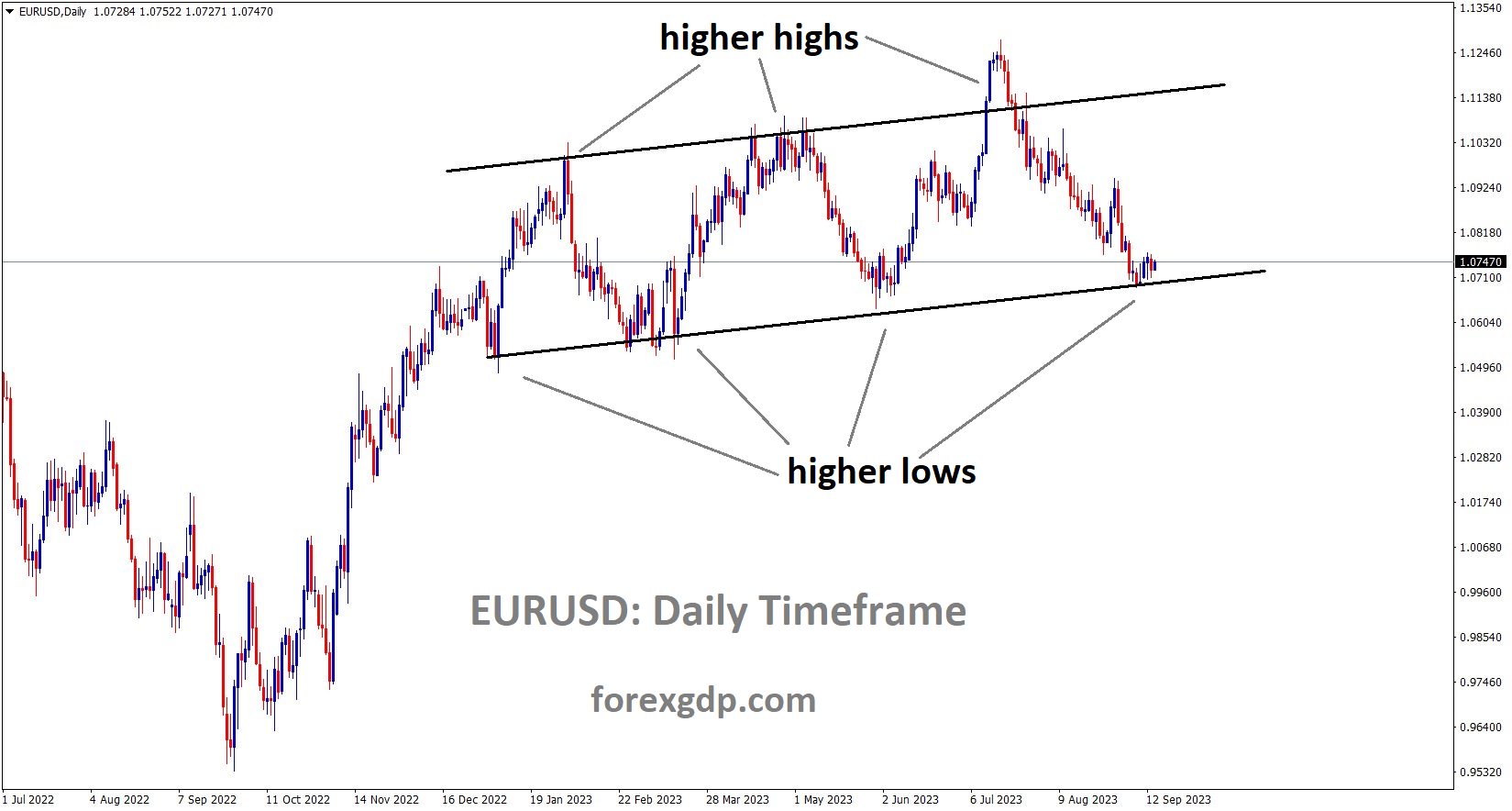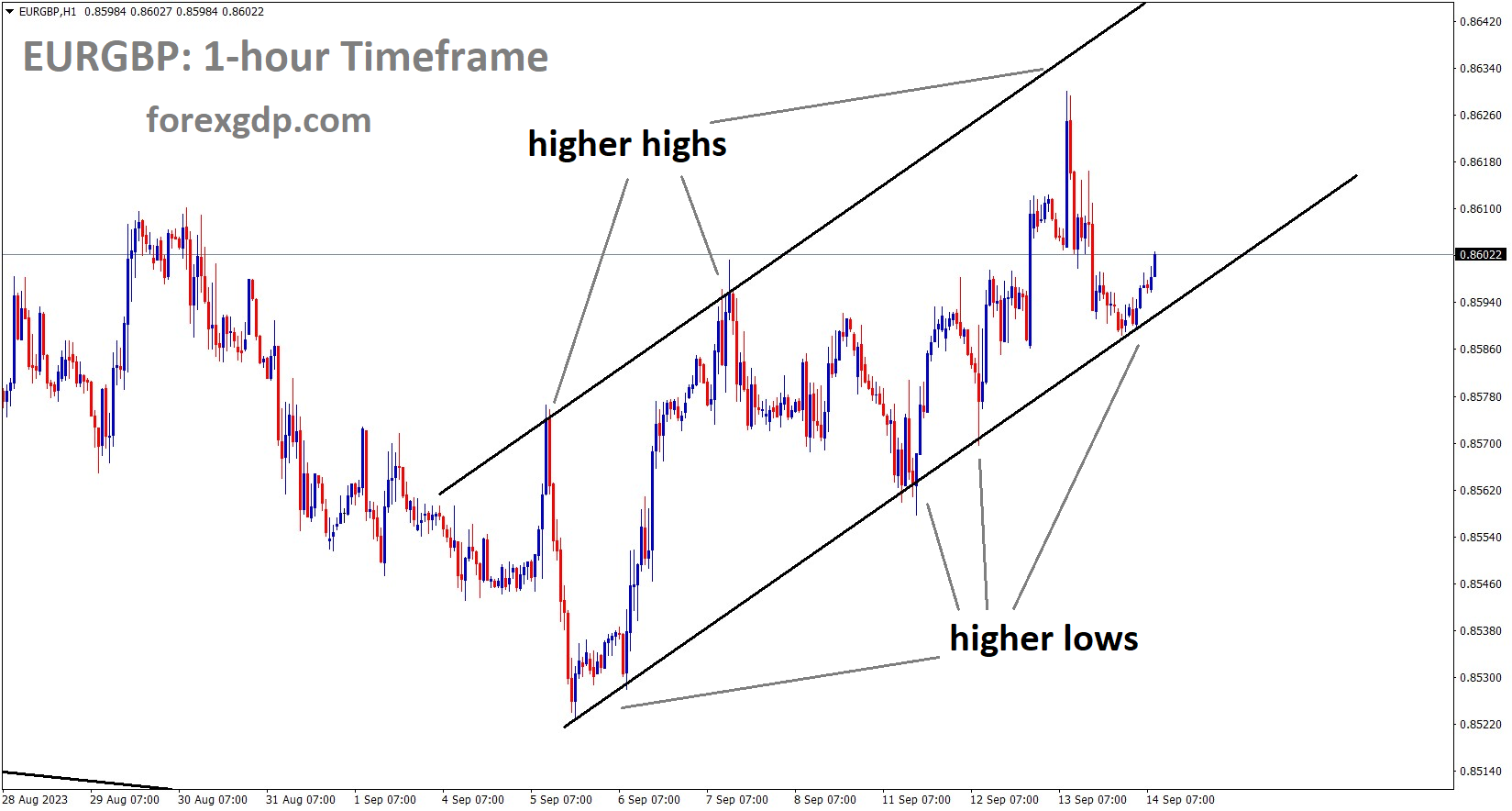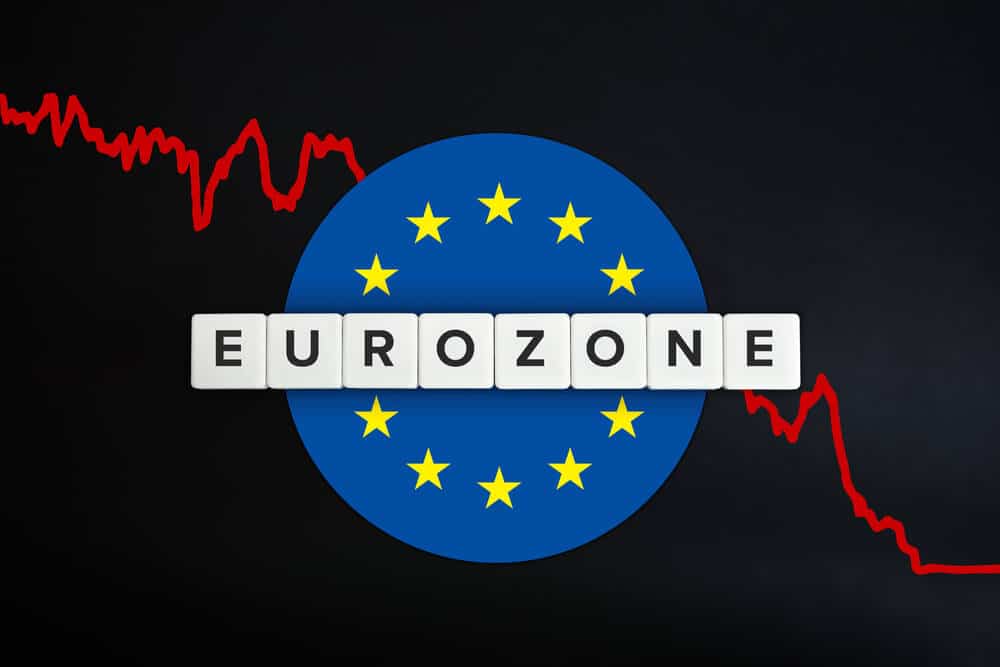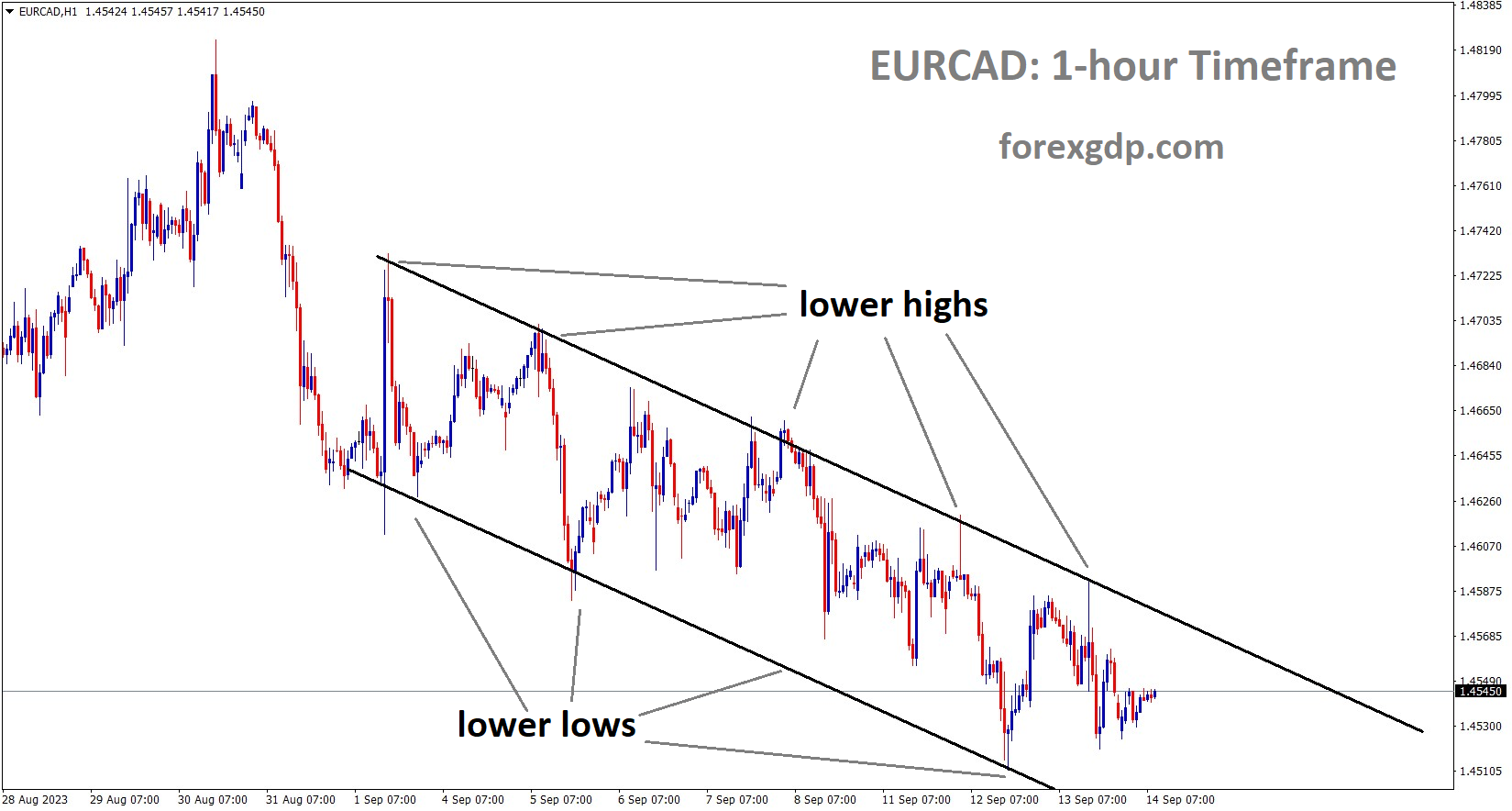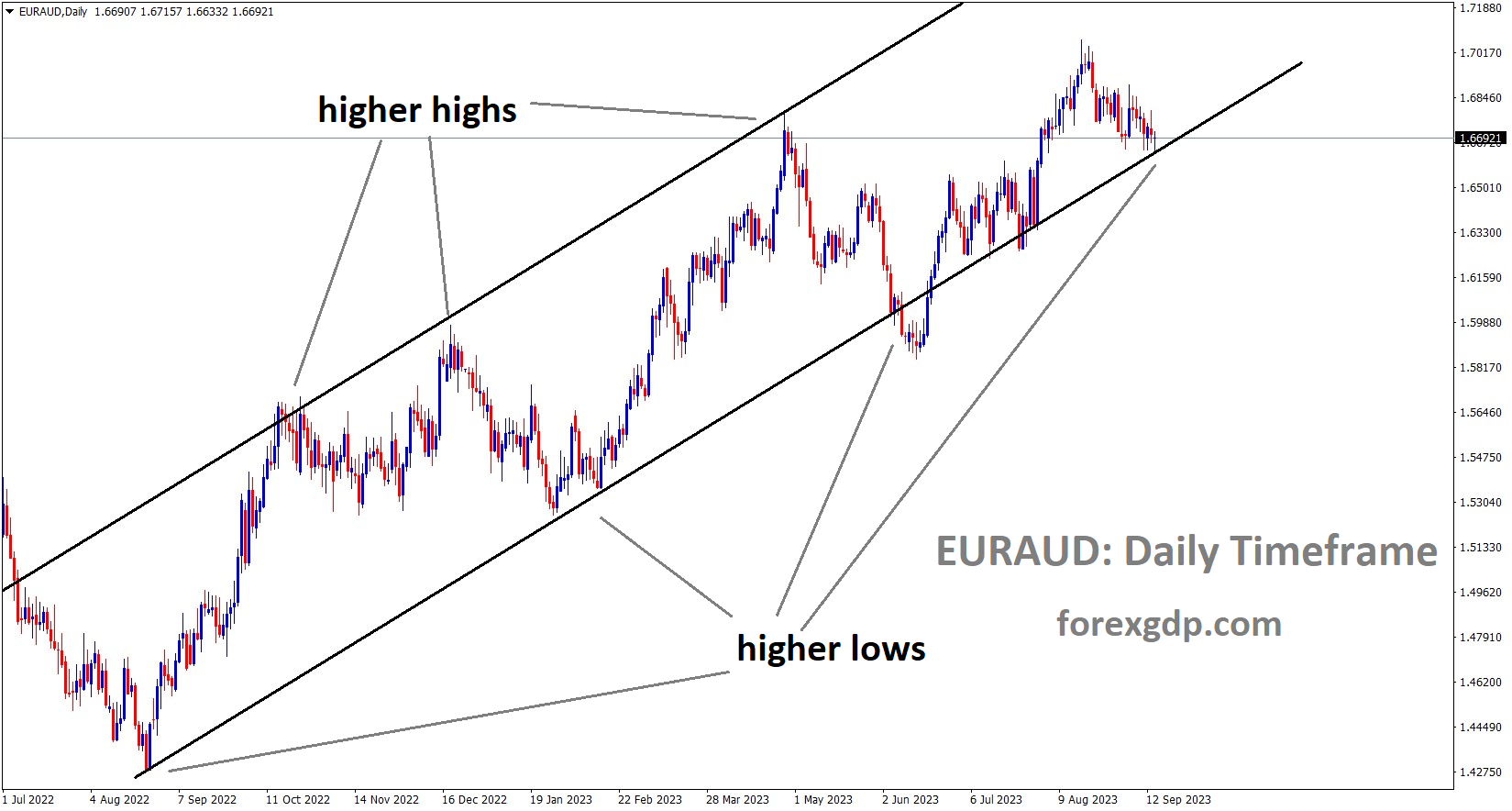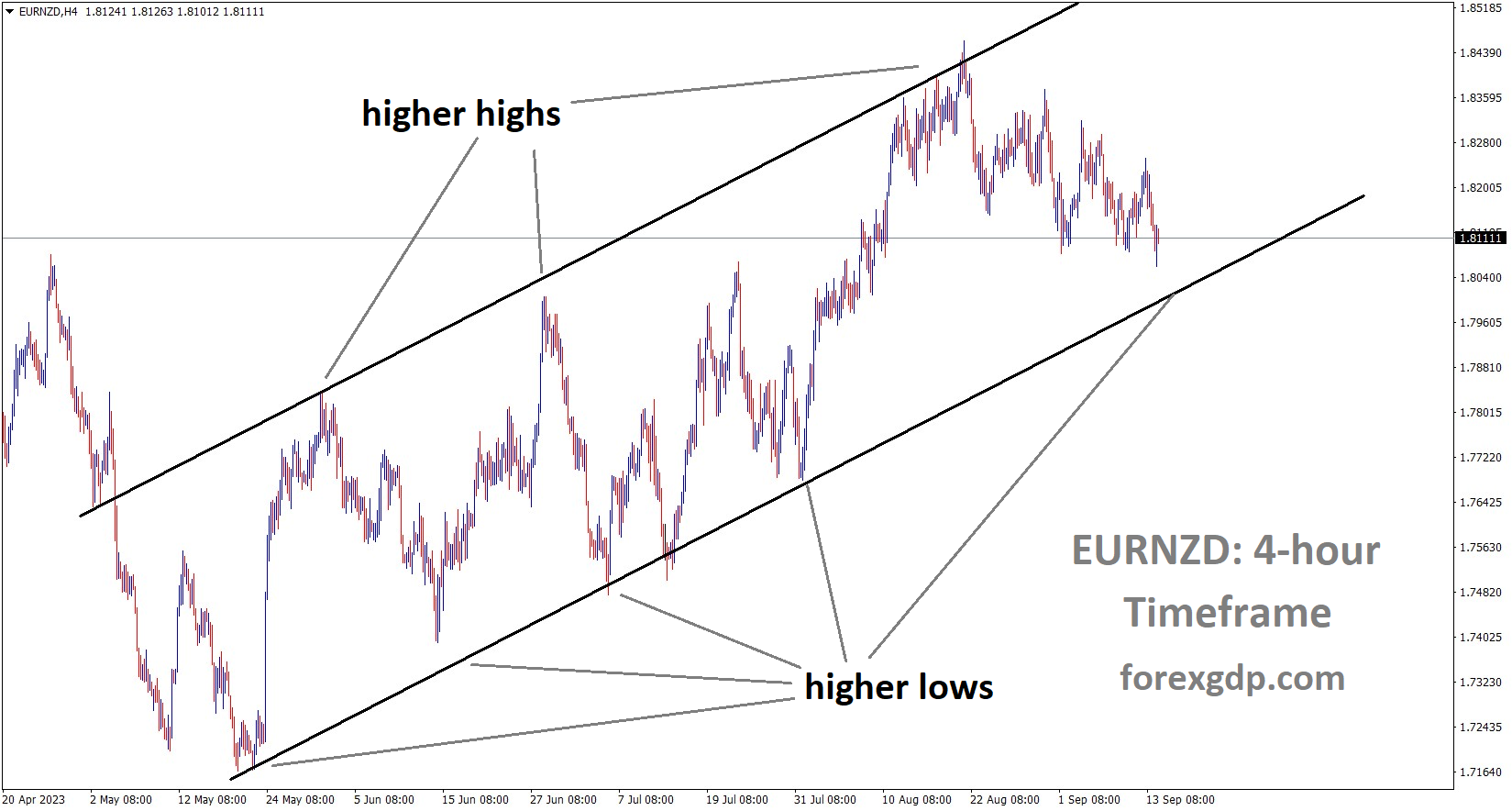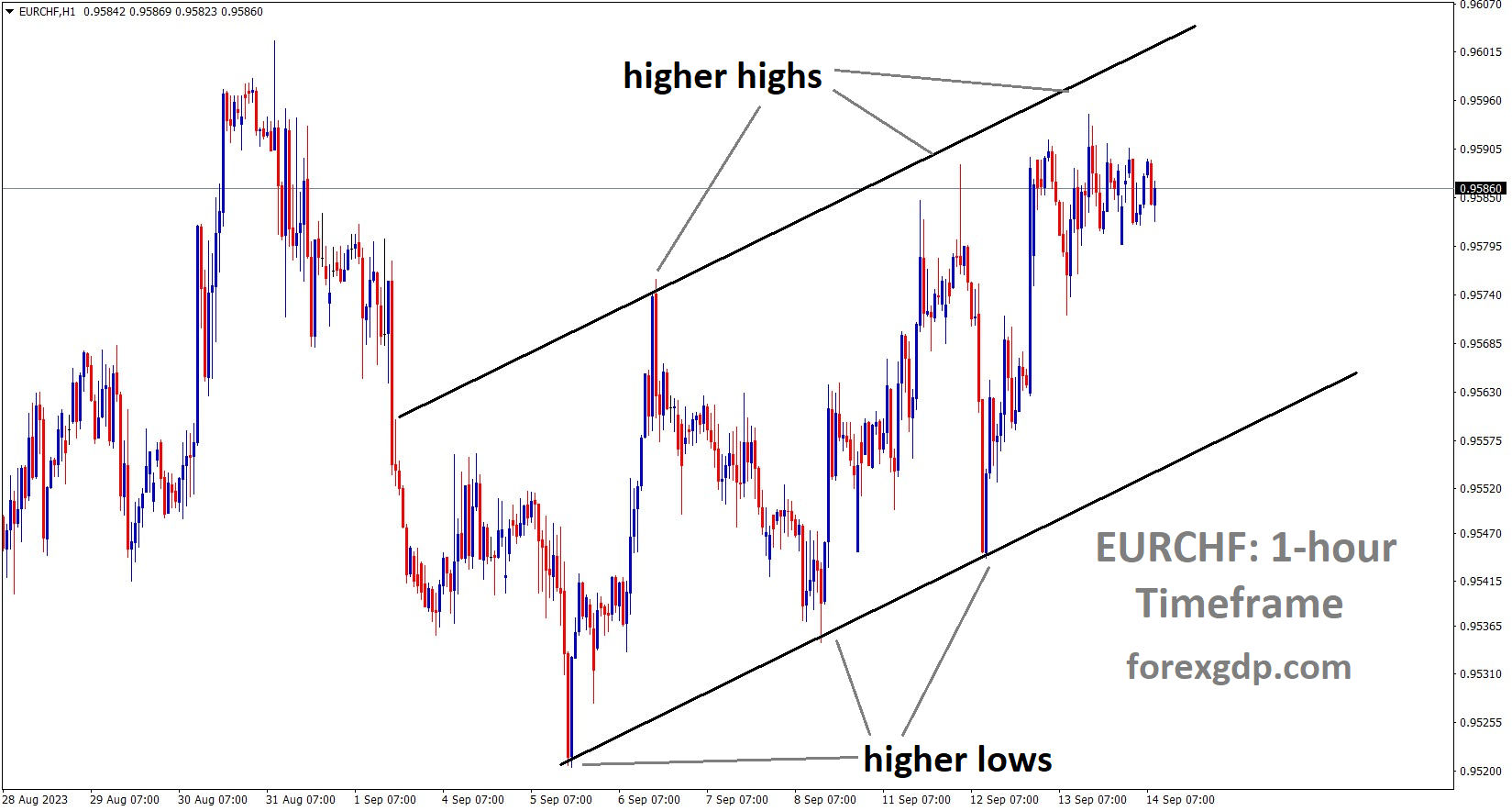EURUSD is moving in an Ascending channel and the market has reached the higher low area of the channel
ECB is like to hold the rates at 4.25% is widely expected by analysts, CPI is cooling and labour cost decreasing, employment numbers slowing in Euro area, So more tightening leads to recession in Euro area.
The European Central Bank (ECB) plays a pivotal role in the Eurozone’s economic stability. As it approaches a critical rate decision, economists, policymakers, and financial markets closely scrutinize its choices. The ECB’s primary mandate is to maintain price stability, with an inflation target of 2%. However, the challenges it currently faces are multifaceted, making the rate decision far from straightforward.
Overview of the Current Economic Climate
To understand the ECB’s rate decision, we must first examine the broader economic context in the Eurozone. In recent months, the region has grappled with a range of issues that have raised concerns about the stability of its economy.
Inflation and Labor Costs
One of the primary challenges for the ECB is striking a balance between managing inflation and addressing labor cost dynamics. Inflation is a key metric that central banks monitor closely, as it affects the purchasing power of consumers and the overall economic environment. In the Eurozone, despite some signs of cooling in the Consumer Price Index (CPI), core inflation remains elevated at 6.2% year-on-year. Core inflation excludes volatile components such as food and energy, providing a more stable measure of price movements.
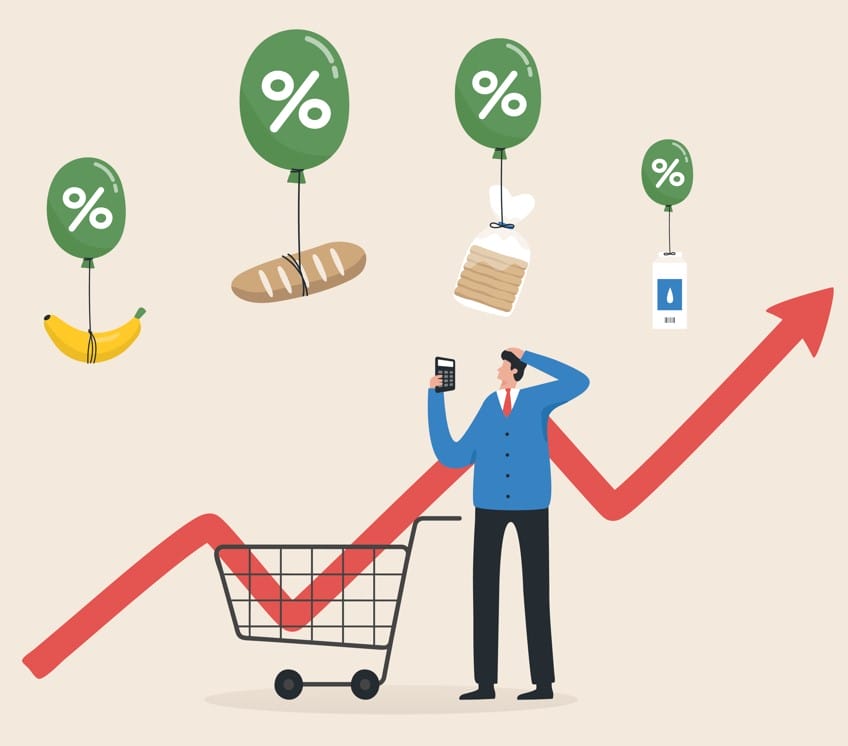
The persistence of high core inflation suggests that the ECB may need to consider further policy measures to control it. However, an equally significant concern is the decreasing labor costs in the Eurozone. Lower labor costs can reflect economic weakness, as companies may cut wages or reduce hiring when they anticipate a slowdown in demand. The interplay between inflation and labor costs creates a complex policy landscape for the ECB.
Slowing Employment Numbers
A related concern is the deceleration in employment numbers across the Euro area. Employment figures are a vital indicator of an economy’s health, and a slowdown can have cascading effects. When fewer people are employed, it can lead to reduced consumer spending, lower tax revenues, and increased social welfare costs. Therefore, the ECB must carefully consider the implications of employment trends on overall economic growth.
Challenges Leading to Rate Decision
Several key factors are shaping the ECB’s decision-making process regarding interest rates.
- Inflation and Labor Costs: The ECB’s primary mandate is to maintain price stability, with an inflation target of 2%. However, the persistence of high core inflation and decreasing labor costs create a policy dilemma. Should the ECB prioritize controlling inflation or supporting employment and economic growth?
- Slowing Employment Numbers: The slowdown in employment growth in the Euro area raises concerns about the overall economic trajectory. If the labor market continues to weaken, it could dampen consumer spending and economic activity.
Euro’s Recent Fortunes and External Factors
EURGBP is moving in an Ascending channel and the market has rebounded from the higher low area of the channel
The Euro’s performance in the international currency markets is influenced by a myriad of factors, including economic conditions, interest rates, and geopolitical events. Understanding the Euro’s recent trends is crucial in assessing the ECB’s rate decision.
Economic Factors Affecting the Euro
After an impressive uptrend that stretched almost ten months, the Euro’s fortunes took a turn for the worse during the summer. Several factors contributed to this shift.
- Resurgence of the US Dollar: A significant challenge for the Euro has been the massive rebound in the US dollar. The relative strength of the US economy and its monetary policy decisions have bolstered the dollar’s position in the global currency markets.
- Deteriorating Eurozone Economic Outlook: Another thorn in the Euro’s side is the deteriorating outlook for the Eurozone economy. Following an aggressive tightening campaign that took everyone by surprise, borrowing costs in the Euro area now stand at their highest since the single currency’s inception. This increase in borrowing costs affects businesses and consumers, potentially slowing economic growth.
External Factors Impacting the Eurozone
Beyond economic factors, external events can exert significant pressure on the Eurozone economy.
- Weakening Demand in Export Markets: The Eurozone relies heavily on exports, particularly to key trading partners. The weakening demand in these markets, exacerbated by global economic uncertainties, has added to the challenges faced by the Eurozone.
- Germany’s Economic Sentiment: Germany, as Europe’s economic powerhouse, plays a critical role in the Eurozone’s overall economic health. The ZEW economic sentiment index for Germany has been closely watched, as it reflects business and investor confidence. A downturn in this index could underscore the gloom surrounding the Eurozone economy.
Economic Data and Policy Guidance
Economic data and policy guidance are instrumental in understanding the ECB’s decision-making process.
GDP Growth Revision
The recent revision of second-quarter GDP growth from 0.3% to 0.1% quarter-on-quarter has revived concerns about a potential recession. Economic growth is a key driver of employment and overall prosperity, making it a central consideration for the ECB.
ECB’s Dilemma
EURCAD is moving in the Descending channel and the market has fallen from the lower high area of the channel
The ECB faces a dilemma in its rate decision. While the consensus among economists and money markets leans towards keeping the deposit rate unchanged at 3.75%, investors still see a sizable probability of about 35% that the ECB will hike by 25 basis points in September. This divergence in expectations highlights the complexity of the decision.
Inflation and Hawkish Hold
Core inflation, which excludes food, energy, alcohol, and tobacco, has barely fallen this year, while the CPI that excludes only food and energy remains fairly elevated at 6.2% year-on-year. These inflationary pressures could lead some members of the ECB’s Governing Council to push for one further rate hike before agreeing to a pause.
ECB’s Policy Options
The ECB has several policy options at its disposal:
- Raise Rates: The ECB could choose to continue raising interest rates to combat inflation aggressively. However, this approach risks slowing economic growth and potentially tipping the Eurozone into a recession.
- Pause: Alternatively, the ECB could opt for a pause in rate hikes, acknowledging the economic challenges and aiming to support growth. A pause could be seen as a more dovish stance.
- Hawkish Hold: If the ECB decides not to raise rates but maintains a hawkish tone in its policy statement, it can signal readiness to act if necessary. This approach can provide some limited upside correction in the euro/dollar exchange rate.
Fed’s Meeting and Impact
The Federal Reserve’s upcoming meeting also has implications for the ECB’s rate decision. The Fed’s policy decisions can influence global financial markets and, by extension, the Eurozone economy.
Fed’s Meeting Impact on Markets
The Fed doesn’t meet until September 19-20, which is almost two months since the July FOMC meeting. Market participants are eagerly awaiting fresh policy guidance from the Fed. The gap between meetings has created a demand for timely information to navigate the economic landscape.
US Dollar’s Influence and Upcoming Fed Meeting
EURAUD is moving in an Ascending channel and the market has reached the higher low area of the channel
The strength of the US dollar can have a significant impact on the Eurozone economy and the ECB’s policy decisions.
US Dollar’s Strength
The US dollar’s impressive uptrend, which has seen it reach six-month highs, has posed challenges for the Euro. A stronger dollar can make Eurozone exports less competitive and affect trade balances. Furthermore, it can lead to capital outflows from the Eurozone, affecting financial markets.
Fed’s Meeting
The Fed’s policy decisions, including interest rate changes and policy guidance, are of global significance. The ECB and other central banks often adjust their policies in response to the Fed’s actions. Therefore, the upcoming Fed meeting is keenly awaited, as it will provide valuable insights into the US economic outlook and the potential direction of US monetary policy.
Market Sentiment and Recession Risks
Market sentiment is a critical factor that influences the ECB’s rate decision, and it can be shaped by a range of factors, including economic data and geopolitical events.
Market Sentiment
Market sentiment is a reflection of investors’ perceptions and attitudes towards various asset classes. It plays a crucial role in determining asset prices and financial market stability. In the context of the ECB’s rate decision, market sentiment can be influenced by a barrage of economic data releases, geopolitical events, and central bank actions.
Recession Risks
One of the most significant concerns facing the Eurozone is the risk of a recession. A recession is generally defined as a period of economic decline characterized by a decrease in GDP for two consecutive quarters. Several factors contribute to the growing concerns about a recession in Europe:
- Sharp Economic Slowdown: The Eurozone has experienced a sharp economic slowdown, with GDP growth slowing to a crawl.
- Weakening Demand: Weakness in global demand, particularly from key trading partners like China, has contributed to the Eurozone’s economic challenges.
- German Economic Woes: Germany, the largest economy in the Eurozone, has been grappling with its own set of economic problems, including reduced manufacturing output and declining exports.
Analysts’ Predictions and ECB’s Decision
Economists and analysts closely follow the ECB’s rate decisions, providing valuable insights into market expectations and potential outcomes.
Analysts’ Consensus
EURNZD is moving in an Ascending channel and the market has reached the higher low area of the channel
A majority of economists predict that the ECB will maintain the status quo by keeping interest rates steady. However, this consensus hides a significant minority of analysts who expect another rate hike. The divergence in opinions underscores the uncertainty surrounding the rate decision.
Uncertainty
The inflation data hasn’t provided a clear direction for the ECB’s decision. Core inflation remains stubbornly high, which could justify further rate hikes to combat inflation. On the other hand, the economic challenges and weakening growth prospects raise concerns about the potential negative impact of further rate hikes.
Impact on Eurozone Economy
The ECB’s rate decision has far-reaching implications for the Eurozone economy, affecting various sectors and aspects of economic life.
Impact on Borrowing Costs
Changes in interest rates directly affect borrowing costs for businesses and consumers. Higher interest rates can increase the cost of financing, potentially slowing investment and consumption. Conversely, lower rates can stimulate borrowing and economic activity.
Impact on the Exchange Rate
The ECB’s decisions also influence the exchange rate of the euro against other currencies, particularly the US dollar. A stronger euro can make Eurozone exports more expensive for foreign buyers, potentially impacting exports and trade balances.
Impact on Financial Markets
The ECB’s rate decisions can lead to movements in financial markets. Equity markets, bond markets, and currency markets are particularly sensitive to central bank actions and statements.
Future Outlook and Policy Options
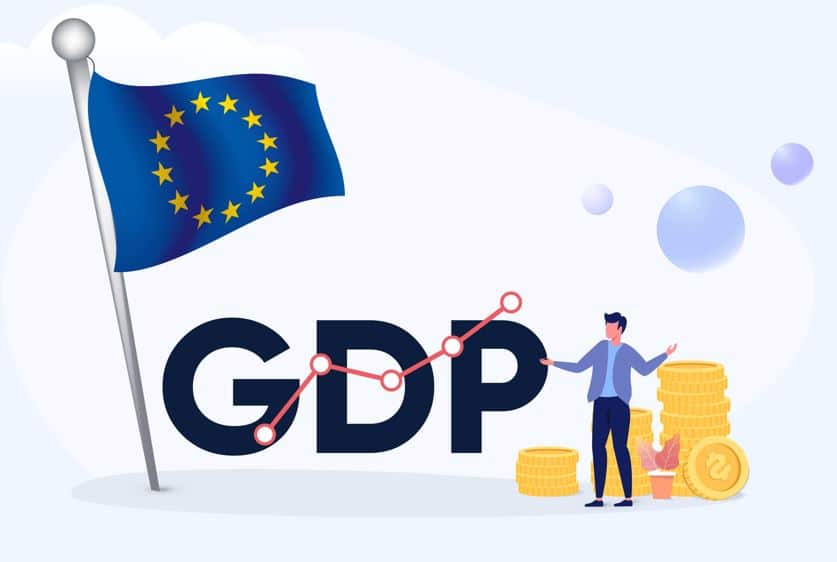
The ECB faces a complex set of challenges as it navigates the current economic landscape.
Desperation in Fighting Inflation
The ECB is becoming increasingly desperate in its fight against inflation. Persistent high inflation can erode purchasing power and lead to economic instability. However, there is growing uncertainty about the effectiveness of further interest rate hikes in controlling inflation.
Unconventional Measures
As inflation persists and economic growth weakens, the ECB is considering unconventional measures to address the situation. These measures include altering reserve requirements for banks and potentially reducing its bond portfolio. These unconventional tools reflect the central bank’s determination to strike a balance between price stability and economic growth.
The Complex Path Forward
The path forward for the ECB is fraught with complexity. Balancing the need for controlling inflation with the imperative of supporting economic growth presents a formidable challenge. The central bank must weigh these factors against the backdrop of a rapidly changing global economic environment.
The Role of ECB’s Communication
EURCHF is moving in an Ascending channel and the market has reached the higher high area of the channel
Effective communication is crucial for the ECB to manage market expectations and foster trust. The central bank acknowledges the challenge of disseminating factual information in the era of social media and rapid information dissemination.
The Challenge of Communication
In today’s interconnected world, central banks must carefully manage their communication strategies. Any hints or statements by central bank officials can trigger market reactions, potentially amplifying the impact of their decisions.
Alternative Measures for Inflation Control
The ECB is exploring alternative measures to combat inflation, reflecting its willingness to adapt to evolving economic conditions.
Adjusting Reserve Requirements
One potential measure involves altering reserve requirements for commercial banks. By increasing the amount of money banks must hold in reserve, the ECB can reduce the money supply in the economy, potentially curbing inflationary pressures.
Reducing Bond Holdings
Another unconventional tool at the ECB’s disposal is reducing its bond holdings. The central bank has accumulated a significant portfolio of bonds as part of its quantitative easing programs. Reducing these holdings can tighten monetary conditions and exert downward pressure on inflation.
The Dilemma of Timing and Impact
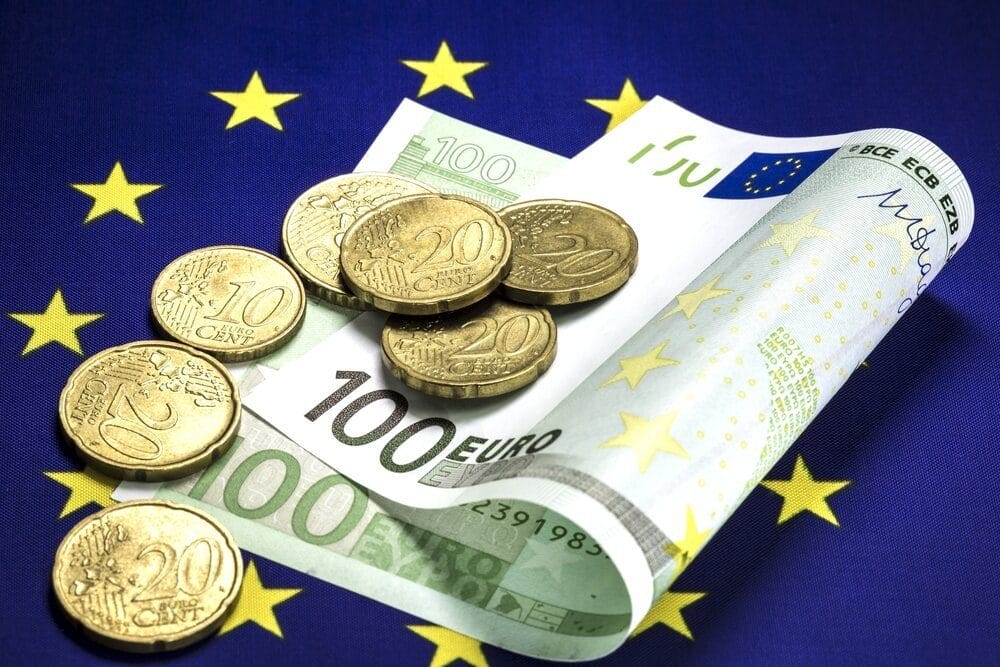
The ECB’s rate decision is fraught with uncertainty as it seeks to balance multiple objectives and potential consequences.
Balancing Act
The ECB faces a delicate balancing act between controlling inflation, supporting economic growth, and maintaining financial stability. The timing of rate decisions and the extent of policy measures can have a significant impact on the Eurozone’s economic trajectory.
Looking Ahead: The Road to Recovery
As the ECB faces complex decisions, the road to recovery for the Eurozone remains uncertain. The risk of prolonged stagflation—characterized by stagnation in economic growth alongside persistent inflation—looms large, with potential implications for the European economy.
In conclusion, the European Central Bank’s rate decision is a critical juncture in the current economic climate. The central bank must carefully weigh the multiple economic indicators, external factors, and policy options at its disposal to make a decision that supports both price stability and economic growth. The road ahead is complex and uncertain, with significant implications for the Eurozone’s economic outlook and its place in the global economy.
Don’t trade all the time, trade forex only at the confirmed trade setups.
Get more confirmed trade setups here: forexgdp.com/buy/

